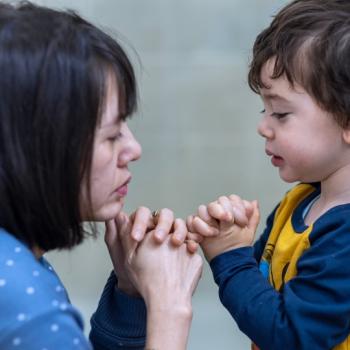Are more Christian leaders turning to their pagan roots?

Although I grew up with Celtic Christian roots, the identification pagan was not honored in Christian communities as it is today. The limited understanding of what was pagan referenced only what was outside of the Church. Heathen. Cultish. My Scottish Presbyterian upbringing pointed me to John Calvin and John Knox as my guides for what was to be done decently and in order. At times I felt it might be more important to follow Reformed theologian Karl Barth than Jesus Christ. My interfaith leanings seemed something of a stumbling block during my ordination process. It was suggested that I stick to the “Jesus Christ is my Lord and Savior” standard until after I was good and fully ordained. Then I might follow the heathen ways that sat in the depths of my being.
Christians Turn to Their Pagan Roots
But more and more, I see Christian leaders turning to their pagan roots, welcoming the solstice into their Christmas celebrations. Finding sanctuary in the natural world. Christian ministers lead solstice labyrinth walks. And write pieces that honor their connection to spirit in the natural world. At Columcille Megalith Park, Christian, pagan, and wiccan leaders gather for solstice observations. They recognize the longing for light as one of the basic needs of humanity. Light just might need its own spot on Maslow’s Hierarchy of Needs along with shelter, safety, and love. For as long as people have gathered in community, they have created ritual to honor the light. Instead of being threatened by what is pagan, Christians are embracing the connection to the human need for worship that is not restricted by orthodoxy.

Christmas as a Solstice Celebration
Widely accepted is the fact that the date of Christmas has its roots in the Roman celebration of the sun god Saturn. Early Christians in Rome hid their celebration of the birth of the Messiah in the Saturnalia celebrations that culminated on December 25. And just as these new followers of the Way co-opted the imperial language to describe their new leader as Lord, King, Prince of Peace, so they connected the holy day of Christmas to this solstice-time celebration. So isn’t it a beautiful thing that Christian leaders now seem increasingly comfortable re-connecting our Christmas celebrations with ancient solstice rituals?
The Paradox of Pagan Christians
Megan LeCluyse, director of the Christian Association at the University of Pennsylvania shares a reflection on her visits to Stonehenge and Orkney. These sites of neolithic sun worship predate Christianity by 3000 years. She notes the paradox of her path to Christian ministry, marked by her resonance with these pagan sites. She recognizes the beauty found in the connection to worshippers who did not know Jesus Christ. They longed for the light in the world as we do. They are part of the same story. It is not a paradox at all. It is Christians awakening to a deeper placement of Christ’s story cradled in the story of all creation.

Celtic Christians
The island of Iona, known as the birthplace of Christianity in Scotland, from the 6th century ce has held the Celtic and Christian worlds in close communion. John Philip Newell, Celtic teacher and former warden of the Iona Community, explains
the Christ mystery did not seem strange to the Celtic worldview. Rather, it gave further expression to the sacredness the Celts already knew existed deep in the matter of the earth and in the stirring of the human soul.
Sacred Earth, Sacred Soul, 2022
Pagan and Christian are woven into the same fabric for pilgrims to this holy island and for the Celtic Christianity that has spread throughout the world from this community.

What Would Jesus Do?
Some Christians like to ponder – what would Jesus have thought? The following poem offers some imaginings of the Christ child, stirring in the womb during these solstice days of darkness. Ready to be light in the world. Ready to embrace those who were in the flesh before him. Their ways of worship. Their longing for light. Had Jesus seen those standing stones, I feel quite certain he would have marveled at their glory. And joined in the dance.
Saving Solstice
The faeries dance and dreamers pray
All biding in the shortest day
That light will come from out this brew
Of cold and dark
the winter’s stew.
In hope and faith they gather round
As songs are lifted from the ground
To echo in the depths of night
“Please rid us of this fearsome blight.
So light will come and life renew
And earth enliven with the dew
Of days grown longer in the sun
Come light again. Let us be one.”
But there inside her burdened womb
Waits one who listens to their tune
Their thirst for light, their need for hope
Their rituals helping them to cope.
She pushes life into this world
Her light, made flesh, new hope unfurled.
They stop their dance and turn their gaze
And put away their common ways.
But no! He shouts into the night.
Don’t stop for me. It isn’t right.
I’ve come in flesh to join with you
That darkness might be honored too.
Margaret Somerville
Light upon Light
As we sit in wait on this Christmas Eve for the coming of light in the form of flesh, we join the story of all humanity. We join our hands with those from millennia ago. We welcome the Christ child with a solstice celebration. Light upon Light. (Surah An-Nur – 35, Qur’an)
















